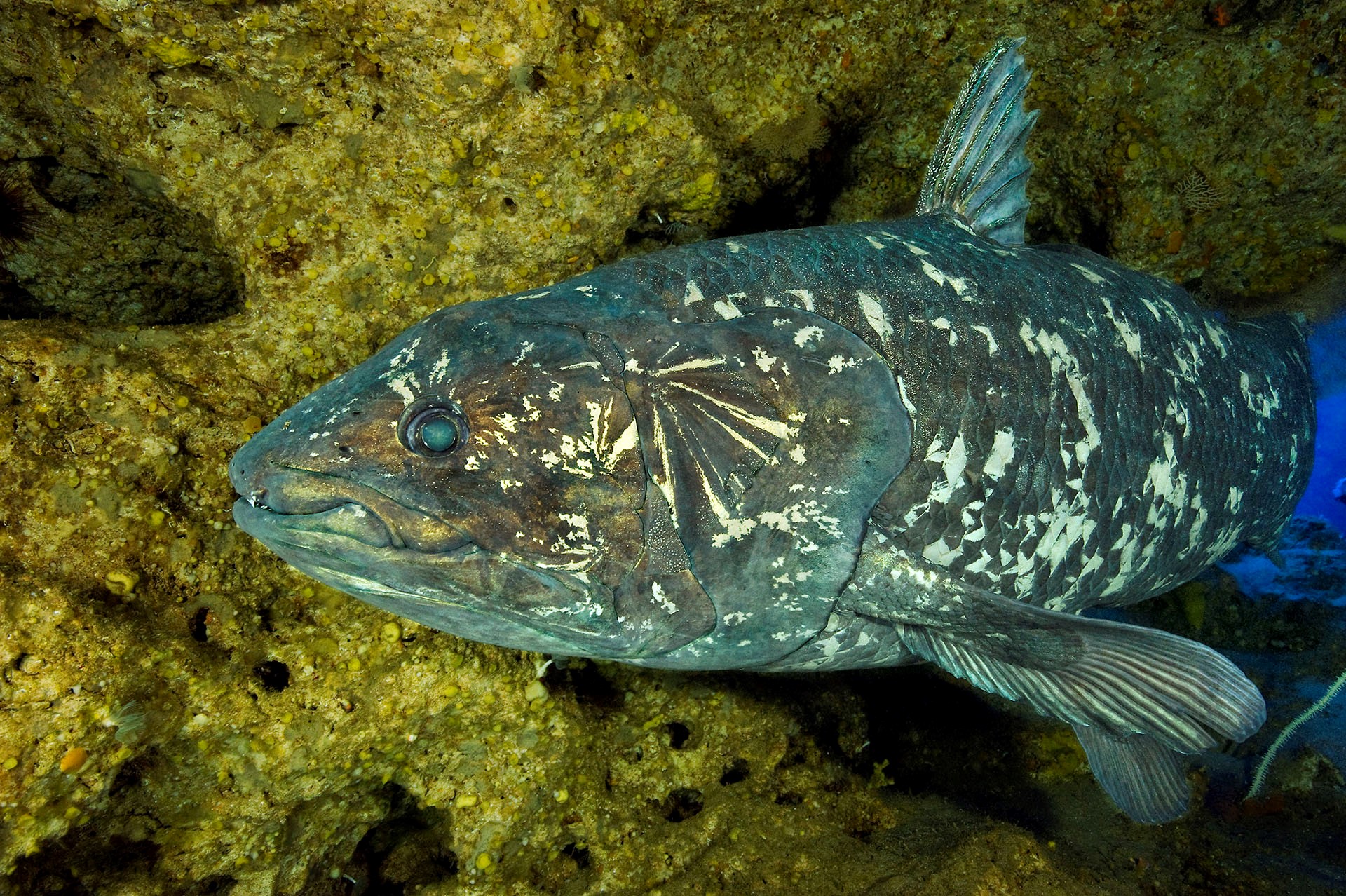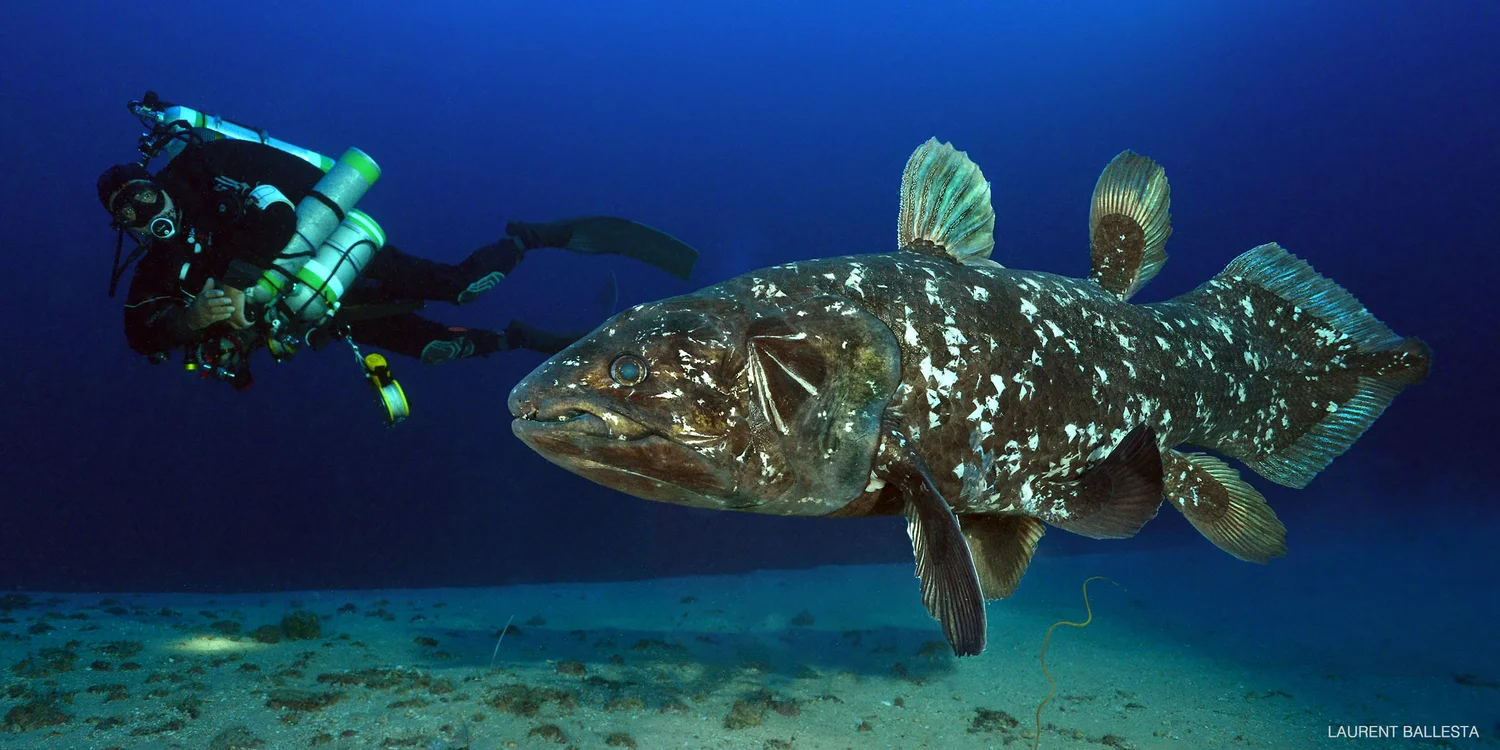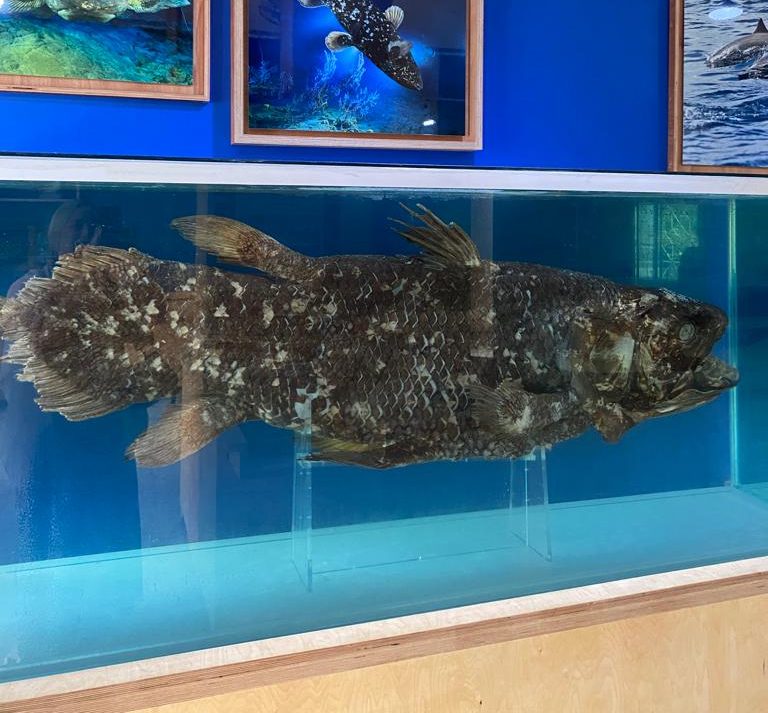

A fish, thought to be extinct until 1938, the elusive coelacanth made its dramatic return in the Comoros, serving as an enduring symbol of survival in the deep and a story of hope for its continued preservation.
Today, this “living fossil” sits at the heart of marine discovery and protection in the western Indian Ocean. The coelacanth Comoros story weaves together science, heritage, and conservation.
Through pioneering missions like Nekton’s “First Descent: Comoros” mission, researchers and local scientists are expanding our understanding of coelacanth habitats while building a foundation for long-term conservation.


The Comoros archipelago (Grande Comore, Anjouan, Mohéli) straddles the Mozambique Channel between Madagascar and mainland Africa. Around Grand Comore, a special marine zone – “the Coelacanth Zone” – is recognized for its ecological importance: underwater volcanic caves and coral reefs provide ideal habitats for the coelacanth.
In 2016 the nation established Parc National Coelacanth (Coelacanth National Park) off the coast of Ngazidja (Grande Comore). The marine protected area includes volcanic slopes, coral reefs, deep‐water caves and is home to whales, dolphins and, critically, this rare fish. Estimates suggest around 400–500 adult coelacanths, each 1–2 metres long, inhabit the area.

The coelacanth is often called a living fossil because its lineage dates back more than 400 million years. Two extant species exist: Latimeria chalumnae (western Indian Ocean, including Comoros) and Latimeria menadoensis (Indonesia).
This fish can grow to nearly 2 metres, live for decades, and reproduce slowly with gestation periods measured in years. Found in highest density around Comoros, it dwells in the twilight zone of the ocean: during daylight hours the fish rest in small caves on volcanic slopes at depths of 170–240 m, and at night descend even deeper—down to 500 m—to hunt. Dwelling on these the deep reefs is thought by scientists to be the reason for its long-lived survival. Its unique lobed fins, internal structures, and slow metabolism make it a living bridge to early fish that eventually evolved limbs.
In Comoros, the coelacanth is a symbol of unity, cultural heritage and pride. It appears on stamps, coins, museum displays and even the name of the national football team, “Les Coelacanthes”.
The team will compete in their second ever Africa Cup of Nations (AFCON) tournament this December, opening the competition against Morocco, a moment of immense pride for the nation. This symbolic value amplifies the urgency of living fossil conservation-when the species is protected, so too is a part of national identity.
In Comoros, the coelacanth is a symbol of unity, cultural heritage and pride.

Research into the Comoros coelacanth population has spanned decades. German scientist Hans Fricke led pioneering submersible expeditions in the 1980s-90s off Grande Comore, filming the fish in its cave habitat and documenting that they are slow-moving, hovering rather than active predators. In 2010, French diver Laurent Ballesta, through his Gombessa expeditions, became the first diver to film live coelacanths at 100 m depth, offering rare in-situ insights into behaviour.
While most coelacanth research has focused around Grand Comore (Ngazidja), Nekton’s “First Descent: Comoros” expedition is exploring new potential habitats around the island of Anjouan (Nzwani). Local fishers have reported encounters with coelacanths there for many years, including the most recent recorded catch in 2023, suggesting a distinct population.
This mission is a co-developed initiative designed to support the development of a long-term, Comorian led research programme that continues beyond the expedition itself.
This mission is a co-developed initiative designed to support the development of a long-term, Comorian led research programme.
